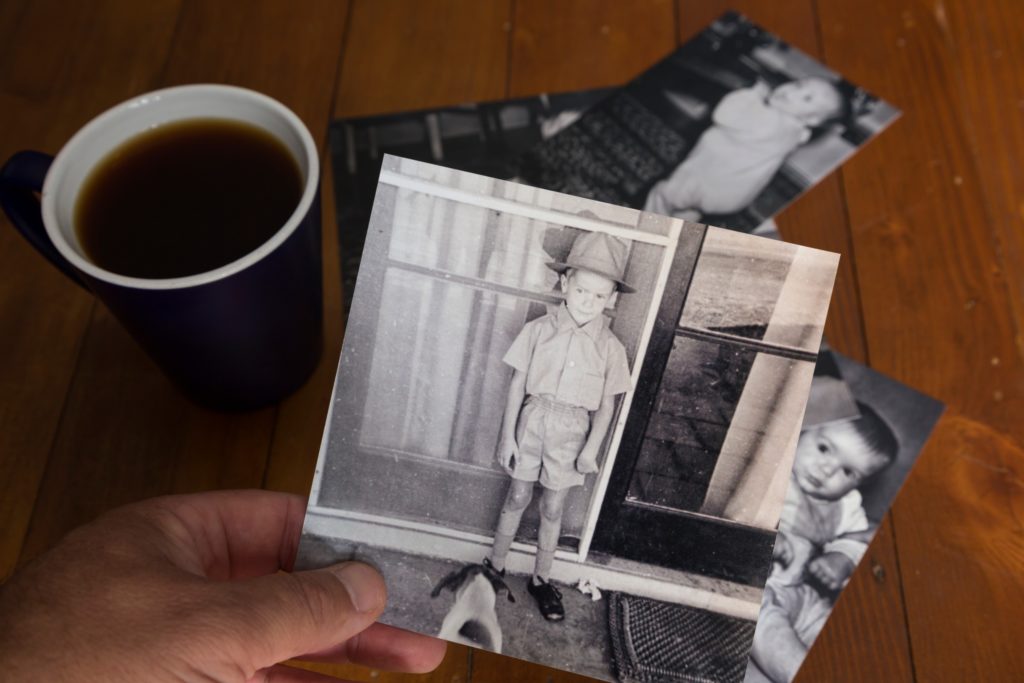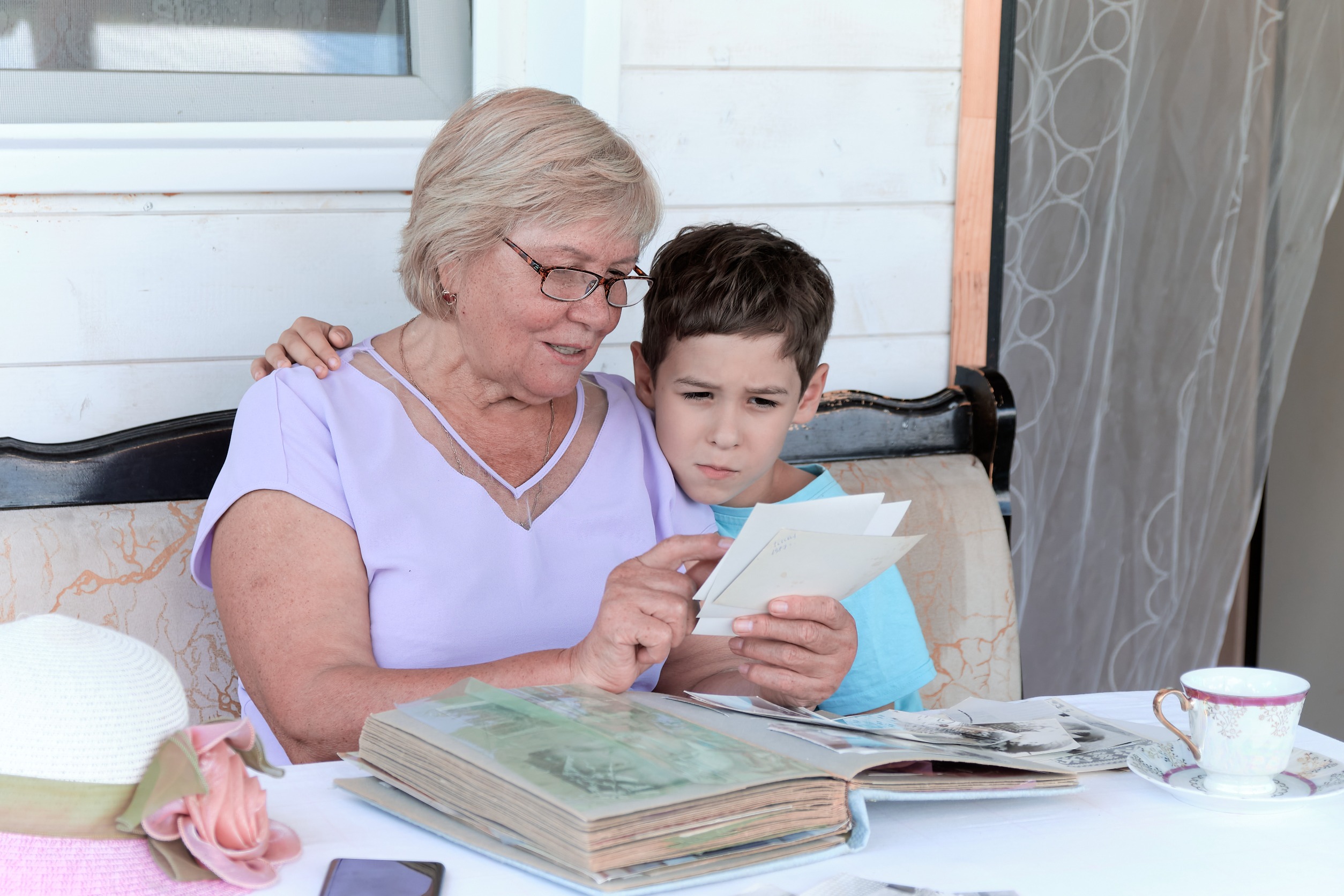Old family photos are like miniature time capsules. They capture precious moments of our lives and faces dear to our hearts.
Unfortunately, if not properly cared for, stored and handled, these old photos may become vulnerable to damage, fading, or loss.
Do you want to know how to care for your old family photos so they remain protected and enjoyed for generations to come?
Then you’ve come to the right place. Below, you’ll find our 14 essential tips how to care for your old family photos. So, gather those boxes of treasured possessions and learn the art of preserving memories.
See how 64smiles can help you organise and share your photos beautifully and privately.
In this article:
Why These Old Family Photos so Important
At a younger age, we have no or little interest in those fusty old pics of the ancestors. We may not have had personal connection with them and frankly, our interest is elsewhere.
However, as one gets older, we begin to appreciate the importance of these family connections. It is no accident that sites dealing with ancestry and finding our roots are so popular.
We want to know where we have come from, who our grandparents and great grandparents were what they were like, how they lived their lives.
If you have old family photos going back generations, you are lucky. These are a window into the past, but vitally your own past.
Beyond their sentimental value, old family photos serve as crucial historical documents, chronicling the evolution of family traditions, cultural heritage, and societal norms. They weave a narrative that connects generations, fostering a sense of continuity and shared identity.
Caring for Old Family Photos is Crucial for Future Generations
Learning how to care for your old family photos is akin to safeguarding a portal to your own collective past.
They hold the key to cherished memories, and embody the essence of family relationships and connections. These visual artifacts are irreplaceable and caring for them properly is vital.
It is also a way for you to pass something on to future generations, your children and grandchildren. Caring and preserving your old family photos allows us to pass down the legacy of our ancestors to future generations.
Sadly, Old Printed Photos Deteriorate Over Time
Quite often collections of old family photos are stored away in boxes or cases. This fine, they are out of the light and no disturbed. However, over time they will fade and deteriorate especially of the containers are not appropriate or they are bunched together in packs.
As the physical condition of these photos deteriorates over time, proper preservation measures become imperative.
In this post, we outline 14 top tips to help you care for your old family photos perfectly and how to keep these lovely old prints in great condition.
14 Top Tips How to Care for Your Old Family Photos

Your old family photos require proper care and attention. Follow these 14 essential care tips to ensure that your cherished memories and safe and sound.
1. Handle with Care
Treat your old photos like treasures. Before touching them, make sure to wash and dry your hands thoroughly. This will help prevent oils, dirt, or moisture from transferring onto the prints.
When handling photographs, try to hold them by the edges or wear cotton gloves to minimize direct contact with sensitive surfaces. If you need to dust off dirt or debris on your photos, use a soft brush or a microfiber cloth.
2. Store Your Photographs in Archival Materials
Provide a safe and stable environment for your photographs by using archival-quality materials. Look for photo albums, frames, sleeves, and boxes labelled as acid-free, lignin-free, or pH-neutral. These specially designed materials protect against chemical deterioration, thus preventing yellowing, discolouration, and brittleness.
3. Keep Them in a Cool and Dry Place
Maintain a storage environment with relative humidity below 50% and temperatures below 23°C (73°F). High humidity and extreme temperatures can lead to mould growth, warping, or other forms of damage. Avoid storing photographs in basements, attics, or areas prone to temperature and humidity fluctuations. Furthermore, keep them away from windows, radiators, fireplaces, or vents to minimize exposure to moisture and heat. Consider using silica gel packets or dehumidifiers to control the moisture level in your storage area.
4. Keep Way from the Sun
Sunlight and harsh lighting can make your photos lose their quality and colour. Therefore, when displaying them, you need to eliminate direct sunlight exposure. If possible, choose a shaded area in your home. Additionally, you can use UV-filtering glass or acrylic to shield your pictures from harmful ultraviolet rays.
5. Sort Your Old Photos in a Flash
Sorting your old photos is essential. Learn more in this handy 5 step guide to sort and organise old printed photos.
6. Digitise for Extra Protection
Creating digital copies of your old photographs is a smart way to safeguard them against unexpected disasters like fire, flooding, or accidental damage. To capture all the details, we recommend scanning photographs at a high resolution and saving them in the TIFF format. You can scan your prints at home or opt for professional photo digitizing services.
When it comes to digital file storage, use multiple devices and/or cloud storage platforms. This way, even if something happens to the physical prints, you’ll have digital backups to keep memories alive.
7. Label and Document
Preserve the stories behind your photos by labelling and documenting them. Take the time to write names, dates, locations, and any relevant anecdotes on the back of the prints or in accompanying albums. Use a medium hard pencil to minimize damage. This information will help future generations understand the significance and context of each photograph.
8. Keep Negatives Away from Photos
As photo negatives age, they tend to emit acidic gases. For this reason, you shouldn’t keep them in the same box with printed photographs. Acid-free storage products are a much better solution. By providing a protective barrier, they help stop the transfer of damaging substances and maintain the longevity of negatives.
9. No food or drink around photographs
Accidents happen, and spills can easily damage photographs beyond repair. Avoid the temptation to have food or drinks near your photographs to prevent stains, moisture, or sticky residues on the prints.
10. Pens and markers can cause damage
Using pens or markers to write on the back of a photograph can cause irreparable damage. Ink can seep into the delicate emulsion, permanently marring the image. Instead, use soft graphite pencils or archival-safe photo markers for labelling.
11. Avoid Erasers or Solvents When Cleaning
Cleaning photographs using erasers or abrasive materials can scratch or abrade the surface. Similarly, water or solvent-based cleaners may cause smudging, colour bleeding, or even dissolve the emulsion. It’s best to refrain from cleaning unless you have expertise in photograph conservation. Learn more about cleaning photos here.
12. Avoid Paper Clips, Rubber Bands, Glue, or Staples.
These items can leave marks, tears, holes, or stains that affect the appearance and longevity of your photos. If you need to attach your photos to something, use photo corners or hinges that are made of acid-free materials. You can later easily remove them without damaging prints.
13. Repair Tears Correctly and Promptly
While it may be tempting to repair torn photographs with self-stick tape, there are reasons to avoid this approach. It is common for adhesive tapes to deteriorate over time, yellow, or leave a sticky residue on the surface, further damaging a photograph. Instead, rely on archival-quality mending tissue and proper conservation techniques to mend tears.
14. Continue Caring for Your Old Photos
Organisation and caring for old photographs is an ongoing process. Every once in a while, you should get back to your collection and inspect it for possible issues such as discolouration, fading, or sticking together. Catching problems early will allow you to take necessary steps to prevent further damage and seek professional help if required.
Create a Photo Family Tree with 64 Cousins
We see old family photos as being so important and caring for them even more so. It can be a rewarding hobby too and it can become quite addictive. The great news is that nowadays there are plenty of tools that help you manage collections, digitise images and enhance and restore them in a variety of ways.
One of these is our own 64smiles site which makes it really easy to organise and share your treasured photos. All you need is a phone or tablet or computer. or phone.


